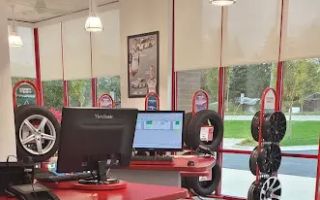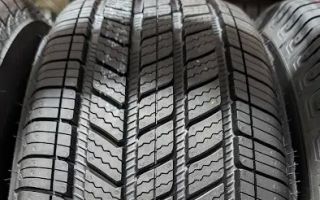How to Replace Car Tires by Yourself: A Step-by-Step Guide
Over the years, I’ve had my fair share of flat tires, and after a couple of roadside emergencies, I decided it was time to learn how to replace car tires by myself. Whether you’re stranded on the side of the road or simply want to save time and money, knowing how to change a flat tire is an essential skill for any car owner. In this guide, I’ll walk you through the process of replacing a car tire step by step, providing tips and insights based on my personal experience and lessons learned along the way.

Pick Your Part - Help Yourself
1232 Blinn Ave, Wilmington, CA 90744, USA
1. Gather the Necessary Tools and Materials
Before you begin, it's important to make sure you have all the tools you need for the job. I’ve learned the hard way that having the right equipment is key to making the process smooth and safe. Here’s what you’ll need:
- Spare tire: Always ensure your spare tire is properly inflated and in good condition. It’s easy to forget about it until you need it, but you don’t want to find out it’s flat when you need it most.
- Jack: A car jack is essential for lifting the vehicle off the ground. Make sure your jack is compatible with your car’s weight and type.
- Lug wrench: This tool is used to remove the lug nuts that hold the tire in place. It should come with your car, but some vehicles require a specific type, so double-check your car’s manual.
- Wheel chocks: These small devices help prevent your car from rolling while you're changing the tire. You can purchase them, or you can use any sturdy object like a rock or piece of wood.
- Gloves: While not strictly necessary, gloves are a good idea to protect your hands from dirt, grease, and sharp objects.
- Flashlight: If you're working at night or in low light conditions, a good flashlight is a must-have.
2. Safety First: Prepare Your Vehicle
Before getting started, safety should always be your number one priority. I’ve been in situations where I was eager to get the job done quickly, but rushing can lead to mistakes. Here’s how to prepare your vehicle safely:
- Park on a flat surface: Always ensure your vehicle is on a flat, stable surface. If you're on a hill or uneven ground, the jack could slip, leading to dangerous situations.
- Engage the parking brake: Engage the parking brake to prevent the car from rolling while it’s lifted. This is a simple yet essential safety measure.
- Place wheel chocks: Place wheel chocks behind the wheels that remain on the ground to keep the vehicle from rolling. This step is especially important if you're changing a tire on a slope.
3. Loosen the Lug Nuts
Now that your vehicle is secure, it’s time to start loosening the lug nuts. A common mistake I made early on was trying to loosen the lug nuts after the car was jacked up, which can be dangerous and difficult. Here’s the proper way to do it:
- Use the lug wrench: Place the lug wrench on the lug nuts and turn them counterclockwise to loosen them. Don’t remove them completely yet—just loosen them enough so you can easily remove them once the car is raised.
- Use your body weight: If the lug nuts are tight, use your body weight to apply more force. You can do this by standing on the wrench or using a longer wrench handle for extra leverage.
4. Lift the Vehicle with the Jack
Once the lug nuts are loose, it’s time to lift the car. Make sure the jack is placed at the right spot on the car’s frame. Many vehicles have designated jack points, which can be found in your owner’s manual. For my first tire change, I wasn’t sure where to position the jack and ended up lifting the car from the wrong point, causing some instability. To avoid this, follow the manufacturer’s recommendations and position the jack directly underneath the vehicle’s frame or the recommended lifting point.
Slowly and steadily pump the jack handle to raise the vehicle off the ground. You want to lift it high enough so the flat tire is completely off the ground, allowing you to easily remove it. I always recommend lifting the car just a little higher than you think you need, to ensure the tire has enough clearance for removal.

House of Tires
3146 Hempstead Tpke, Levittown, NY 11756, USA
5. Remove the Flat Tire
With the car raised and stable, you can now remove the lug nuts completely. Once the lug nuts are off, gently pull the flat tire off the vehicle. It might take a bit of wiggling, especially if the tire has been on for a while, but it should come off with some effort. I’ve had times when the tire seemed stuck, but with a little patience, it eventually popped free.
Place the flat tire to the side and keep the lug nuts in a safe spot, so they don’t get lost while you work. This is a good time to check the tire condition and make sure there’s no major damage to the rim or other parts of the car.
6. Mount the Spare Tire
Next, take your spare tire and carefully align it with the wheel bolts on the car. It’s important to make sure the holes in the spare tire line up with the wheel bolts before pushing it onto the axle. Once aligned, slide the tire onto the hub and ensure it sits snugly against the wheel well.
Now, it’s time to replace the lug nuts. Don’t tighten them completely yet—just screw them on by hand to secure the tire in place. I always make sure the lug nuts are on loosely so that I can tighten them more efficiently once the car is lowered.
7. Lower the Vehicle and Tighten the Lug Nuts
Carefully lower the car using the jack, making sure the tire is firmly touching the ground. Once the vehicle is stable, you can begin tightening the lug nuts in a criss-cross pattern. This ensures the tire is secured evenly and that no nut is overly tight compared to the others. I’ve found that using a “star” pattern (tighten opposite nuts across from each other) provides the most secure fit.
Using the lug wrench, apply enough force to fully tighten each nut. You may need to use your body weight for leverage again, just as you did when loosening the nuts earlier. Make sure each nut is as tight as possible, but avoid overtightening, which could strip the threads.
8. Final Checks
Before you finish, it’s important to check the spare tire’s air pressure. If your spare tire is underinflated, it could be dangerous to drive on. Always ensure that your spare tire is properly inflated to the recommended level, which can usually be found in your vehicle’s manual or on a sticker inside the driver’s side door frame.
Once everything looks good, stow your tools, flat tire, and jack back in your car. You’re ready to hit the road again, and you can feel proud that you’ve successfully changed the tire yourself!




























